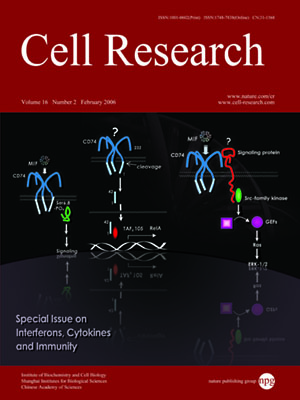
Volume 16, No 2, Feb 2006
ISSN: 1001-0602
EISSN: 1748-7838 2018
impact factor 17.848*
(Clarivate Analytics, 2019)
Volume 16 Issue 2, February 2006: 141-147
REVIEWS
Anti-viral innate immunity pathways
Rashu B Seth1, Lijun Sun1, Zhijian J Chen1
1Howard Hughes Medical Institute, Department of Molecular Biology, University of Texas Southwestern Medical Center, Dallas, TX 75390-9148, USA
Correspondence: Zhijian J Chen(Zhijian.Chen@UTSouthwestern.edu)
Recent studies have uncovered two signaling pathways that activate the host innate immunity against viral infection. One of the pathways utilizes members of the Toll-like receptor (TLR) family to detect viruses that enter the endosome through endocytosis. The TLR pathway induces interferon production through several signaling proteins that ultimately lead to the activation of the transcription factors NF-κB, IRF3 and IRF7. The other antiviral pathway uses the RNA helicase RIG-I as the receptor for intracellular viral double-stranded RNA. RIG-I activates NF-κB and IRFs through the recently identified adaptor protein MAVS, a CARD domain containing protein that resides in the mitochondrial membrane. MAVS is essential for antiviral innate immunity, but it also serves as a target of Hepatitis C virus (HCV), which employs a viral protease to cleave MAVS off the mitochondria, thereby allowing HCV to escape the host immune system.
Cell Research (2006) 16:141-147. doi:10.1038/sj.cr.7310019; published online 13 February 2006
FULL TEXT | PDF
Browse 2223


